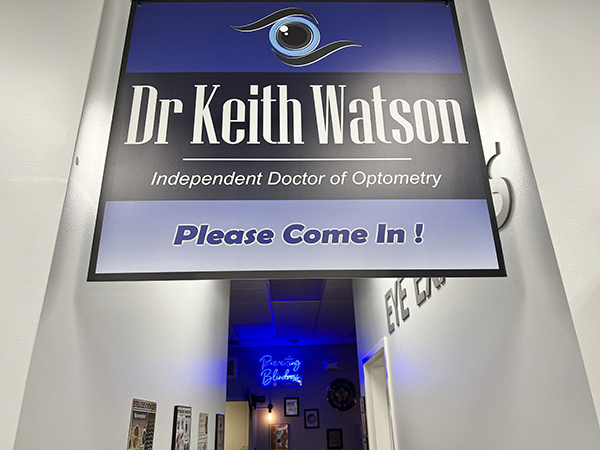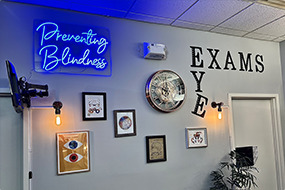
March is Save Your Vision Month, a time dedicated to raising awareness about eye health and the steps we can take to protect our sight. Vision changes can creep up slowly, making it easy to ignore minor symptoms. But when it comes to conditions like Age-Related Macular Degeneration (AMD), early detection and proactive management can make all the difference.
Understanding AMD
AMD is a leading cause of vision loss in people over 50, affecting the macula—the part of the retina responsible for sharp central vision. This means that tasks like reading, driving, and recognizing faces can become increasingly difficult as the disease progresses.
There are two types of AMD:
• Dry AMD – The more common form, accounting for about 80-90% of cases. It occurs when the macula thins over time, often leading to gradual vision loss.
• Wet AMD – Less common but more severe, wet AMD happens when abnormal blood vessels grow under the retina, leaking blood or fluid and causing rapid vision changes.
Early Signs to Watch For
AMD often develops without noticeable symptoms in its early stages, which is why routine eye exams are so important. However, some of the first warning signs may include:
• Blurred or distorted central vision
• Trouble recognizing faces
• Straight lines appearing wavy
• Increased difficulty seeing in low light
• A growing dark or empty spot in your vision
If you notice any of these changes, don’t wait to see an eye doctor. Early diagnosis can provide more options for slowing progression and preserving your vision.
How to Manage AMD
While there is no cure for AMD, there are ways to slow its progression and maintain quality of life. Here’s how you can take control of your eye health:
• Get Regular Eye Exams – Early detection is key. Comprehensive eye exams allow us to catch AMD before it severely impacts your vision.
• Eat for Eye Health – A diet rich in leafy greens, fish, and foods high in antioxidants like lutein and zeaxanthin can support macular health.
• Stop Smoking – Smoking is one of the biggest risk factors for AMD, as it damages blood vessels and accelerates vision loss.
• Protect Your Eyes – Sunglasses that block UV and blue light can help shield your eyes from harmful rays that contribute to macular damage.
• Consider Supplements – The AREDS2 formula, containing specific vitamins and minerals, has been shown to slow progression in some AMD cases.
• Advanced Treatments – For wet AMD, treatments like anti-VEGF injections can help prevent further vision loss.
Prioritizing Your Vision in Waterford, CT
We understand how essential clear vision is for enjoying life in Waterford, from watching the waves at Ocean Beach Park to reading the morning paper at your favorite café. Your eyesight matters, and taking proactive steps now can help protect it for years to come.
This Save Your Vision Month, take the opportunity to check in on your eye health. Schedule your eye exam with Doc Eye today. Visit our office in Waterford, Connecticut, or call (860) 499-3500 to book an appointment.


















